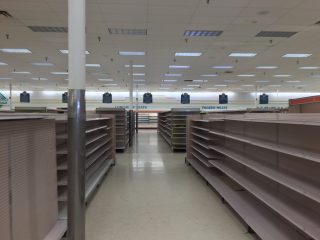It is an adage as old as the hills that Britain is a ‘property-owning democracy’. We have always seen the value of owning our own home. For most of us, it is the single biggest investment that we’ll make and is seen as the key to security in old age.
However, with new housing stock not keeping pace with population growth, fuelling the surge in prices, the dream of home ownership is becoming increasingly unrealistic for anyone under 35.
Home ownership has a number of benefits. Firstly, it improves communities. When people own a property, they tend to look after it, and take a greater interest in keeping their communities in better shape. Nice communities mean higher house prices. It also introduces people to having a large debt obligation in the form of a mortgage. I was amazed that when running my own businesses, many young people that worked for me had never owned a credit card or had borrowed money, meaning that their low credit score caused real issues for them when they applied to get a mortgage.
Secondly, and most importantly for the current government, people that own their own homes are 40% more likely to vote Conservative. They become tied into the economy in the form of interest rates – keeping them low, or at the very least stable – has always been the hallmark of Conservative administrations since time immemorial. Thatcher’s ‘Right-to-Buy’ sell-off of council housing to their tenants created a huge swathe of new Conservative voters.
However, by starting a home-owning revolution, hundreds of thousands of homes were switched from public to private ownership, creating a longer-term shortage for the public sector, which it has never been able to fully square. This shortage of social housing, coupled with the soaring prices of the private sector, means that a large proportion of young people are stuck in the rental market.
While schemes such as Shared Ownership and Help to Buy have had great success in enabling more people to join home ownership following the financial crash, it has exacerbated the issue around upwardly moving prices in the housing market.
As homes have become more affordable through the schemes, house builders are instead artificially inflating the value of homes, meaning that the new owners are buying stock that is overvalued in the cold light of day. At the same time, they have lowered the quality of the houses that they have built, further driving up their profits.
The Grenfell tragedy threw the issue of building quality into sharp relief. Not only have new homeowners been complaining about the poor workmanship of their new houses, which have been literally thrown up, but it is now emerging that the materials that these homes are being built with some of the same highly flammable and insulation products. By using these cheaper materials, which have not been properly assessed, the house building companies are not only leaving a significant cost to the new owners to put the problem right, they are also threatening their lives.
The Sunday Times has recently launched a very interesting and timely investigation into the challenges that new homeowners are facing in terms of poor quality of build and dangerous materials being utilised. In the worst-hit developments, owners are being forced to invest in 24-hour security to safeguard against potential fires, whilst they are unable to sell, refinance or rent their properties until their property is rectified. Whilst the government has stepped in with a £200M grant to help 20,000 private flats re-clad, over ninety eligible blocks are still without any pay-outs. This also doesn’t cover the 70,000 flats which have been built with different kinds of flammable cladding or insulation which mortgage companies will not lend against. Insurance premiums on these properties has also rocketed.
What is inexcusable is the lack of support from the industry that has profited so handsomely from the original purchase of these homes. What is also shocking is that houses are still being built today with some of the same materials which have been banned in the construction of high-rise housing developments.
A few weeks ago, I visited a housing estate in Manchester, looking around new houses that have been clad in high pressure laminate (HPL). This is the same material that was used in a block of student flats that caught fire in November last year. The reason these materials can be used is because the buildings are not over a certain height, and so while they remain legal, their cheapness means less scrupulous builders will continue to use them.
It doesn’t take an expert to realise that new buyers of these homes will be most likely stuck in a similar situation when policy is changed and HPL or other products are deemed unsafe for houses, as they are for flats.
I met with an old business colleague the other week for lunch and I was devastated to hear that, during the process of moving home, discovered that his buyer couldn’t get finance for the purchase, as the necessary checks on his property’s cladding and insulation hadn’t been completed. He’s now stuck in the same position as almost 3 million other homeowners in that he cannot sell or refinance his home until the checks are completed, which could take up to a year to complete. This is a new build flat, that is less than ten years old. Heaven forbid the inspectors find unsafe or flammable materials.
I believe that house builders should shoulder more responsibility in resolving this crisis and restoring faith into the millions of owners who are caught up in this situation. Much like PPI insurance, the government needs to not only ensure house builders take proactive action, but that they too provide insurance to the mortgage companies, so that lending can continue, and people can move on with their lives.
Further, the government should use its available power in relation to the shared ownership and help to buy schemes to ban builders who have taken shortcuts and continue to build without due care, whilst rewarding those who are taking their responsibilities seriously.





Leave a Reply